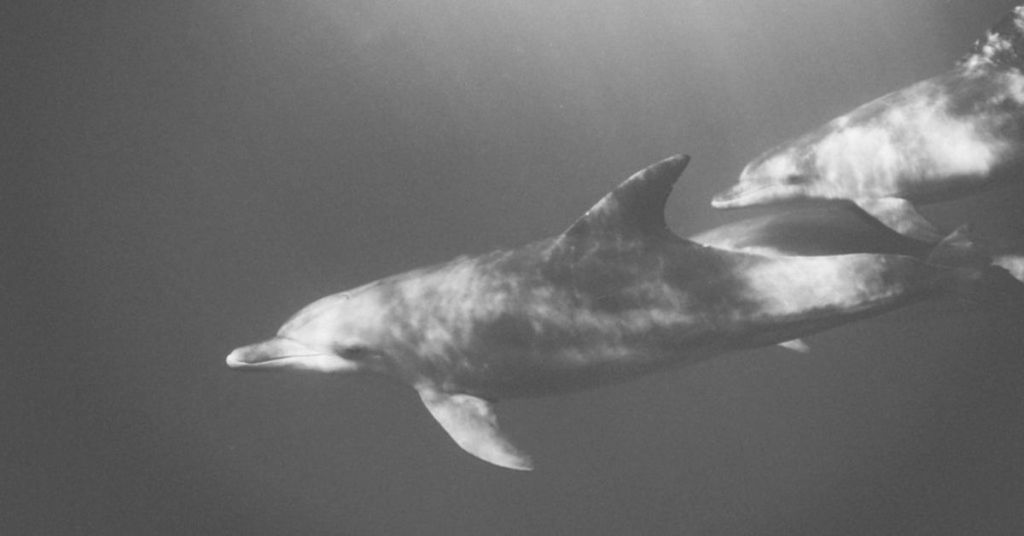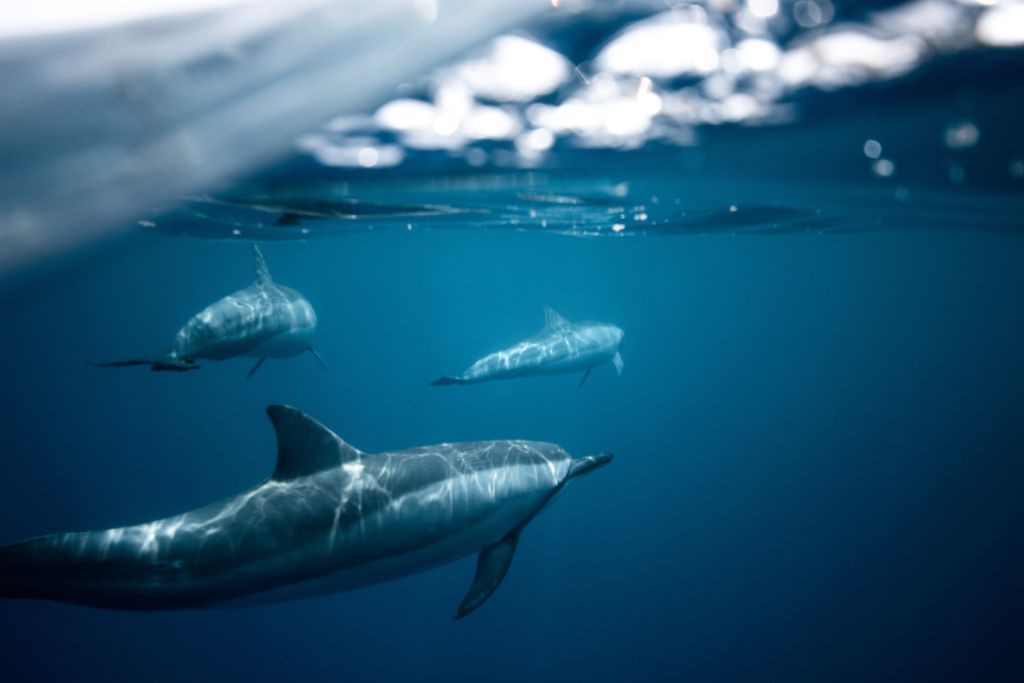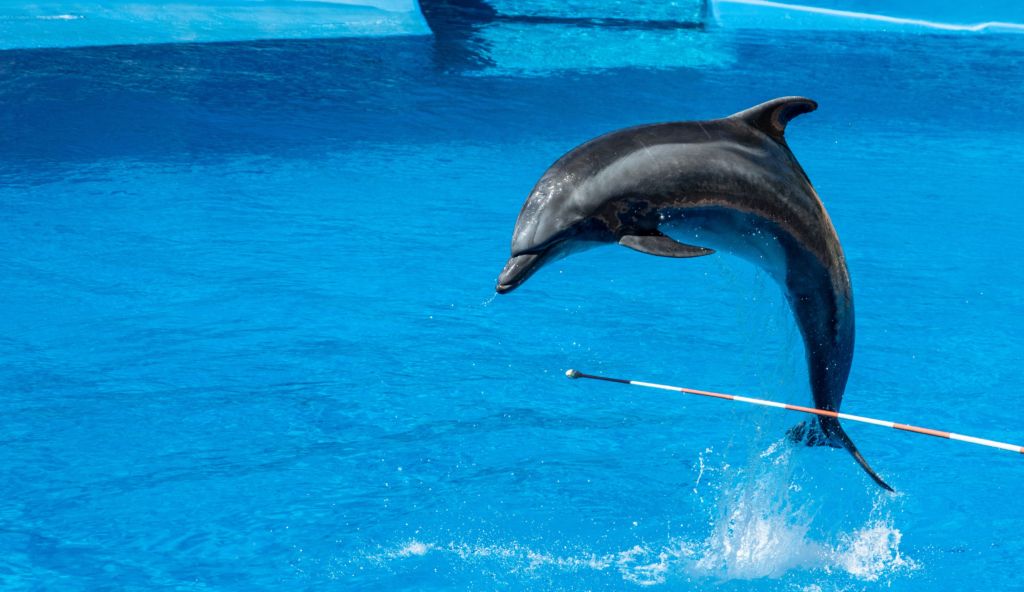Here’s A Deep Dive On How Life In Captivity Stresses Malta’s Dolphins Out

Dolphin centres all over the world tend to claim that keeping cetaceans captive protects them from external threats found at sea.
However, as more studies into dolphins in captivity continue to emerge, there is actually quite a lot of evidence that suggests the opposite.
To say the least, the multitude of stressors experienced from living in captivity have not been acknowledged enough, and it’s time to raise some awareness on the matter.
In collaboration with Animal Liberation Malta and Ecomarine Malta, Lovin Malta spoke to Francesca Soster and Katya Borg, to hear more about how captivity inflicts stress on dolphins.
So, let’s dive right into the dolphin tanks…
The many different stressors
“First of all, dolphins in captivity are exposed to different types of stressors, which include abiotic elements (defined as non-living physical and chemical aspects of an environment) such as exposure to artificial lightning and loud sounds (over 110dB),” Francesca told Lovin Malta.
They also deal with uncomfortable water temperatures, and elements specifically related to confinement such as restricted movement, forced interactions with humans, atypical social groups, and compromised foraging behaviour.
Francesca continued to explain how the majority of behavioural patterns that occur in the wild are restricted, sometimes even completely.
“For example, wide ranges and the possibility to hunt allow dolphins to thrive as predators and to pass on feeding techniques to a new generation through cultural transmission.”
“They have the opportunity to interact with or avoid other individuals, which is not the case in captivity, where this freedom is denied. Basically, these animals have evolved to thrive in the ocean.”
Due to dolphins being predators by nature, their behavioural repertoire is strongly related to hunting – and this is severely affected by the impossibility of catching their prey, thus leading to boredom.
“Boredom is known to be an unpleasant condition for humans and animals and cetaceans are particularly susceptible to the adverse effect of chronic boredom in captivity.”
“Facilities train dolphins to perform tricks in an attempt to reduce the levels of stress caused by this condition. However, the behaviours that are displayed during the shows are conditioned, altered and performed out of context, and the repetitiveness of these behaviours is definitely far away from their natural spontaneity.”

Mating, maternal care, and weaning are restricted
“Other natural behaviours and interactions, such as those associated with mating, maternal care, weaning, and dominance, are also altered significantly in captivity, mainly depending on the availability of space at the facility,” Francesca continued.
When living in their natural habitat, dolphins use echolocation, which is a sophisticated type of sonar used to sense their surroundings with great precision through the use of sound.
“This ability is particularly useful in the ocean where at a certain depth light doesn’t penetrate. In tanks, reverberation can be a problem due to their design and although they can use their echolocation it is rare for them to do so.”
“Such a sophisticated sense is in fact unnecessary in shallow tanks, where they can only use their vision.”
“In general, animals kept in captivity have little control over who becomes their social partners or their sexual partners. How much distance they can create between themselves, and people or other conspecifics is something they have limited control over if any control at all.”
When in captivity, they also have very little or no influence over the food that is provided to them, or when it is made available.
“Additionally, they are typically unable to regulate the quantity, quality, and timing of external inputs like temperature, sound, smell, or light.”

The consequences of captivity
“A recent review by Jacobs et al. (2021) describes the impact of captivity on the brain of these self-aware, highly intelligent, and cultural beings and shows the neural consequences of impoverished environments on them.”
The review was co-authored by neuroscientist Lori Marino, who is specialising in cetaceans’ brains.
“For cetaceans, as for many other animal species, the environment in which they live has different significant effects on the central nervous system, therefore an impoverished environment leads to neural atrophy.”
“Different studies suggest that standard captive conditions cannot provide enough enrichment despite the attempts to alleviate the psychological or behavioural problems caused by captivity itself, with ‘enriched’ objects, such as toys.”
Therefore, this means that there is no type of enrichment that can come close to the complexity of the natural environment.
“In captivity, stress can become chronic and therefore affect the physiological mechanisms, with consequences on the endocrine and the immune system. The effect of chronic stress can therefore be profound and lead to early death, thus affecting their natural longevity.”
This is the fourth article written by Lovin Malta together with Animal Liberation Malta and Ecomarine Malta.
Find the others here: article one, article two, article three.
Share to raise awareness on dolphins in captivity
